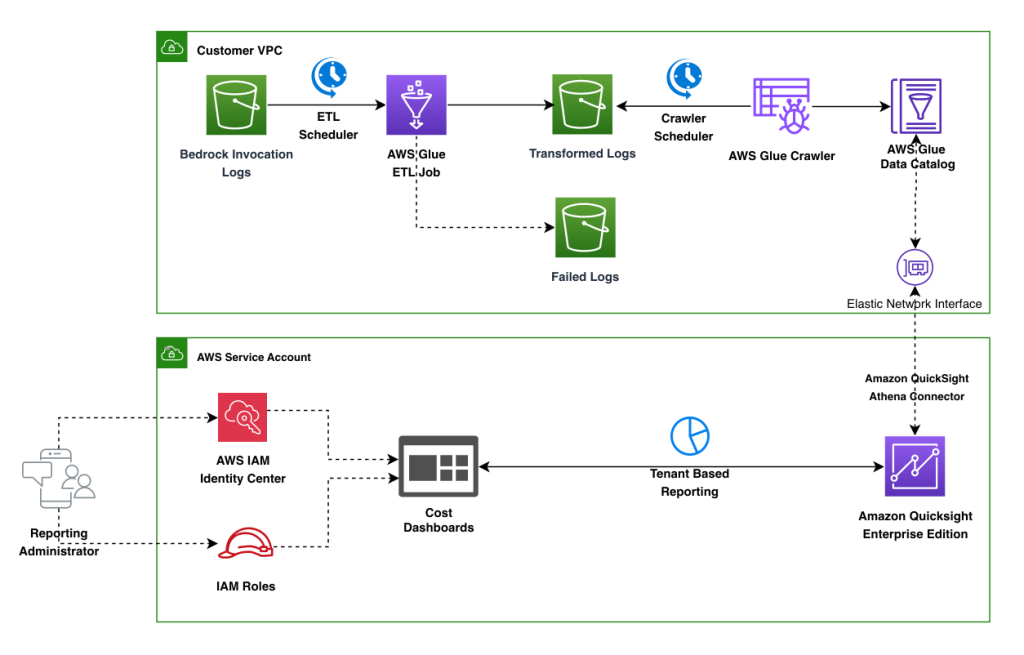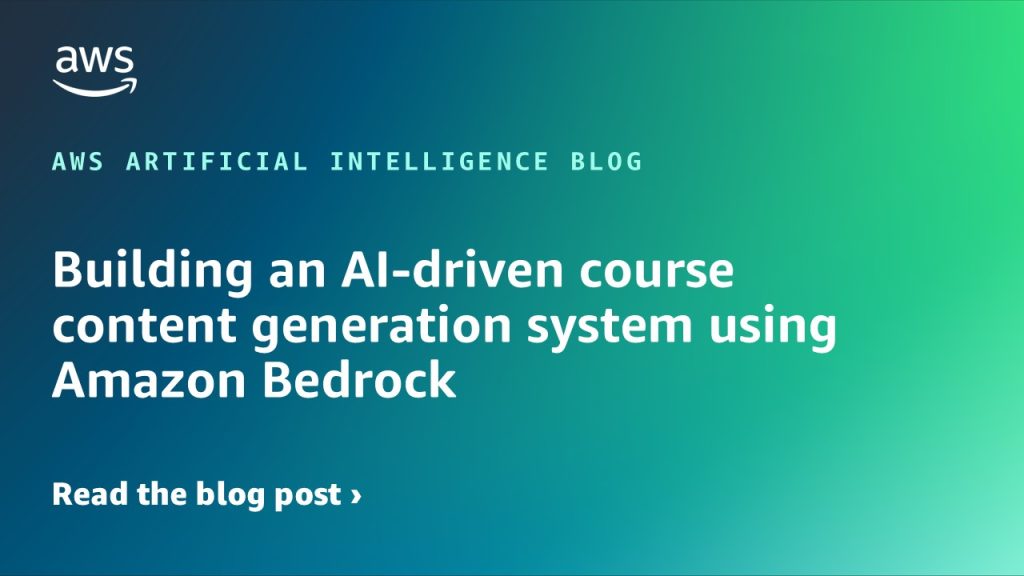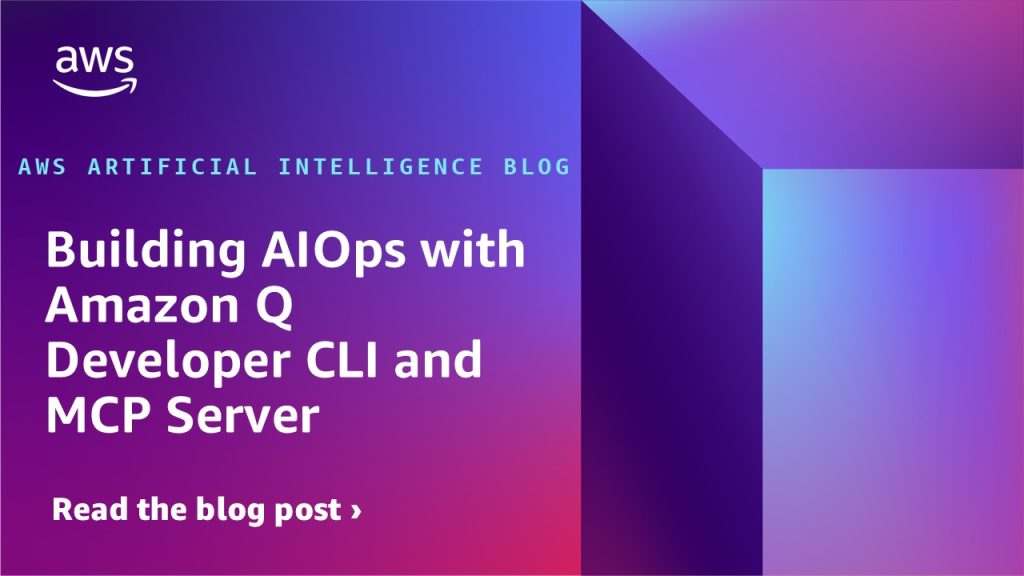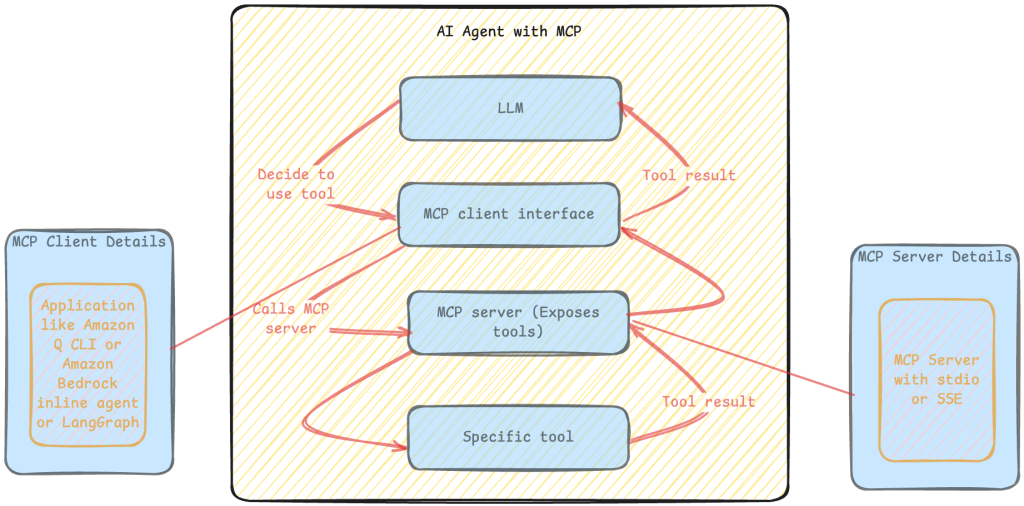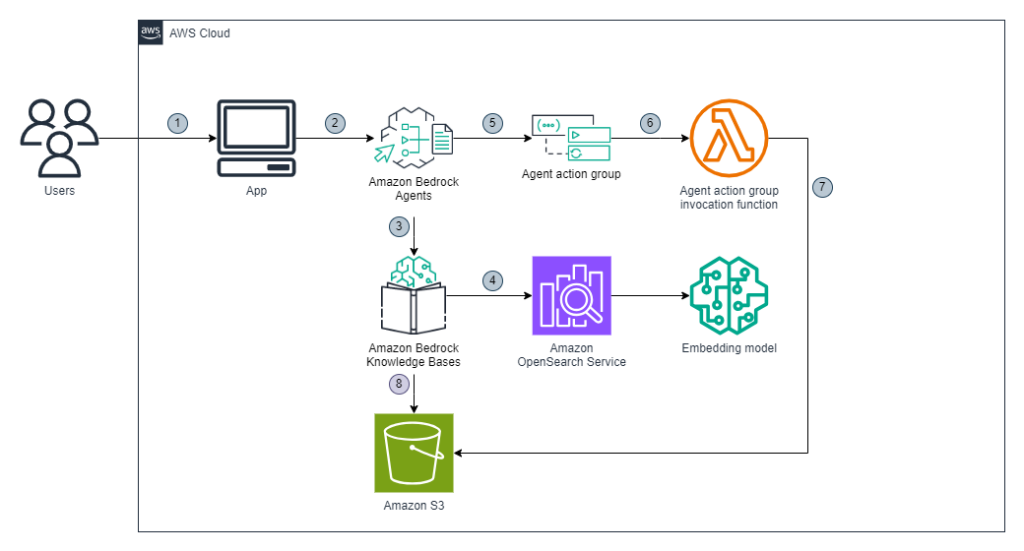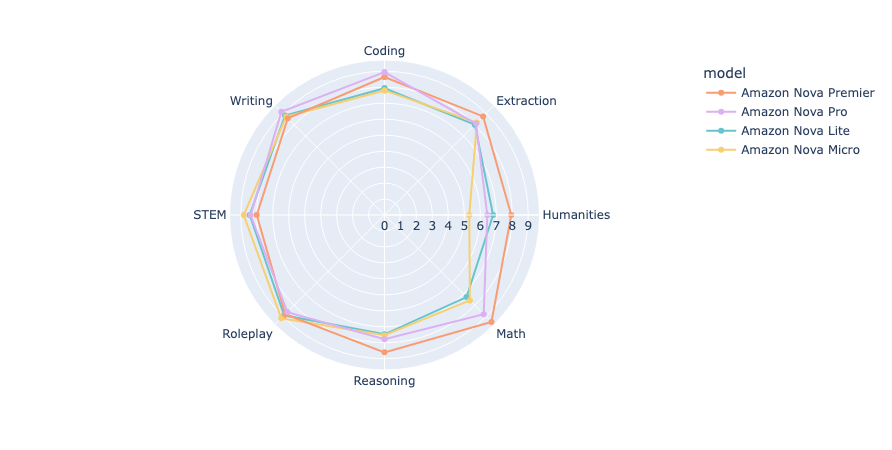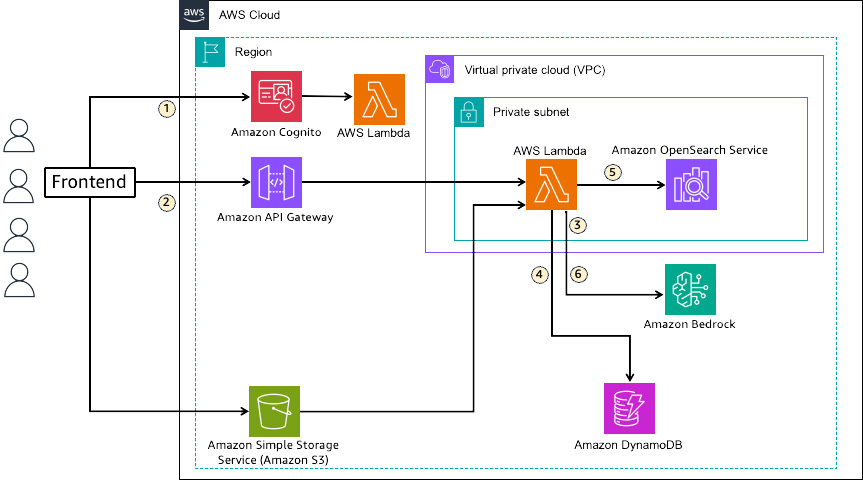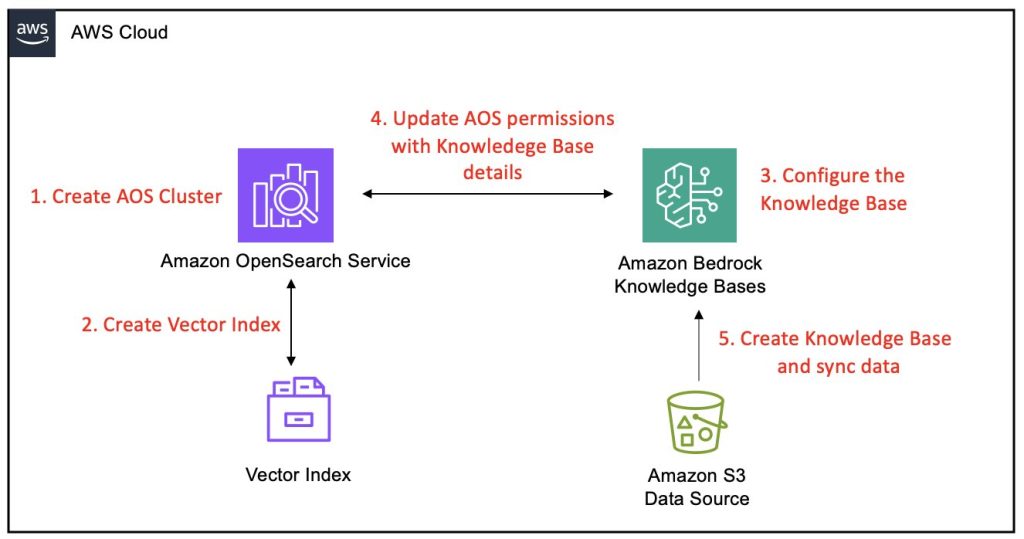Artificial Intelligence
Category: Advanced (300)
Cost tracking multi-tenant model inference on Amazon Bedrock
In this post, we demonstrate how to track and analyze multi-tenant model inference costs on Amazon Bedrock using the Converse API’s requestMetadata parameter. The solution includes an ETL pipeline using AWS Glue and Amazon QuickSight dashboards to visualize usage patterns, token consumption, and cost allocation across different tenants and departments.
Building an AI-driven course content generation system using Amazon Bedrock
In this post, we explore each component in detail, along with the technical implementation of the two core modules: course outline generation and course content generation.
Building AIOps with Amazon Q Developer CLI and MCP Server
In this post, we discuss how to implement a low-code no-code AIOps solution that helps organizations monitor, identify, and troubleshoot operational events while maintaining their security posture. We show how these technologies work together to automate repetitive tasks, streamline incident response, and enhance operational efficiency across your organization.
Automate the creation of handout notes using Amazon Bedrock Data Automation
In this post, we show how you can build an automated, serverless solution to transform webinar recordings into comprehensive handouts using Amazon Bedrock Data Automation for video analysis. We walk you through the implementation of Amazon Bedrock Data Automation to transcribe and detect slide changes, as well as the use of Amazon Bedrock foundation models (FMs) for transcription refinement, combined with custom AWS Lambda functions orchestrated by AWS Step Functions.
Streamline GitHub workflows with generative AI using Amazon Bedrock and MCP
This blog post explores how to create powerful agentic applications using the Amazon Bedrock FMs, LangGraph, and the Model Context Protocol (MCP), with a practical scenario of handling a GitHub workflow of issue analysis, code fixes, and pull request generation.
Generate suspicious transaction report drafts for financial compliance using generative AI
A suspicious transaction report (STR) or suspicious activity report (SAR) is a type of report that a financial organization must submit to a financial regulator if they have reasonable grounds to suspect any financial transaction that has occurred or was attempted during their activities. In this post, we explore a solution that uses FMs available in Amazon Bedrock to create a draft STR.
Build a drug discovery research assistant using Strands Agents and Amazon Bedrock
In this post, we demonstrate how to create a powerful research assistant for drug discovery using Strands Agents and Amazon Bedrock. This AI assistant can search multiple scientific databases simultaneously using the Model Context Protocol (MCP), synthesize its findings, and generate comprehensive reports on drug targets, disease mechanisms, and therapeutic areas.
Benchmarking Amazon Nova: A comprehensive analysis through MT-Bench and Arena-Hard-Auto
The repositories for MT-Bench and Arena-Hard were originally developed using OpenAI’s GPT API, primarily employing GPT-4 as the judge. Our team has expanded its functionality by integrating it with the Amazon Bedrock API to enable using Anthropic’s Claude Sonnet on Amazon as judge. In this post, we use both MT-Bench and Arena-Hard to benchmark Amazon Nova models by comparing them to other leading LLMs available through Amazon Bedrock.
Multi-tenant RAG implementation with Amazon Bedrock and Amazon OpenSearch Service for SaaS using JWT
In this post, we introduce a solution that uses OpenSearch Service as a vector data store in multi-tenant RAG, achieving data isolation and routing using JWT and FGAC. This solution uses a combination of JWT and FGAC to implement strict tenant data access isolation and routing, necessitating the use of OpenSearch Service.
Amazon Bedrock Knowledge Bases now supports Amazon OpenSearch Service Managed Cluster as vector store
Amazon Bedrock Knowledge Bases has extended its vector store options by enabling support for Amazon OpenSearch Service managed clusters, further strengthening its capabilities as a fully managed Retrieval Augmented Generation (RAG) solution. This enhancement builds on the core functionality of Amazon Bedrock Knowledge Bases , which is designed to seamlessly connect foundation models (FMs) with internal data sources. This post provides a comprehensive, step-by-step guide on integrating an Amazon Bedrock knowledge base with an OpenSearch Service managed cluster as its vector store.
